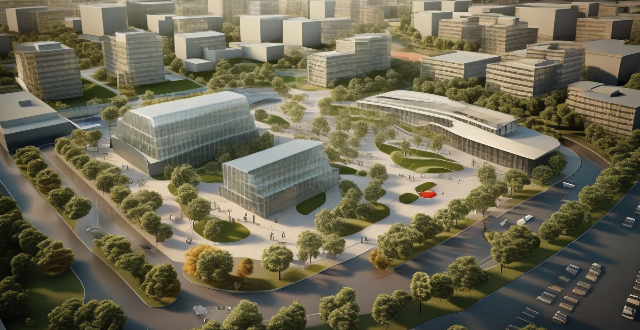Adapting historic city centers to a changing climate is challenging, requiring solutions that balance historical preservation, urban planning, and environmental sustainability. Key challenges include preserving historical integrity through restoration and reinforcement of existing structures while integrating modern technologies. Urban planning considerations involve managing density and land use, enhancing transportation infrastructure, and implementing effective water management strategies. Ensuring environmental sustainability entails promoting renewable energy sources and fostering ecological diversity. Collaborative efforts from various disciplines are crucial for creating resilient historic centers that preserve cultural heritage and meet climate change demands.

Challenges of Adapting Historic City Centers to the Needs of a Changing Climate
Adapting historic city centers to the needs of a changing climate presents numerous challenges. These challenges are multifaceted and require a comprehensive approach that takes into account historical preservation, urban planning, and environmental sustainability. In this discussion, we will explore some of the key challenges faced by cities as they strive to adapt their historic centers to the demands of climate change.
Preserving Historical Integrity
One of the primary challenges in adapting historic city centers is preserving their historical integrity. Many historic buildings and structures are not designed to withstand the extreme weather conditions associated with climate change, such as heavy rainfall, flooding, or heatwaves. Ensuring that these structures remain intact while also making them more resilient to climate impacts requires careful consideration and innovative solutions.
Restoration and Reinforcement
Restoration and reinforcement of existing structures is essential for maintaining their historical character while improving their ability to cope with climate-related stresses. This may involve:
- Strengthening Foundations: To prevent damage from floodwaters or shifting soils due to heavy rainfall.
- Improving Drainage Systems: To manage increased precipitation and reduce the risk of flooding.
- Retrofitting Building Envelopes: To enhance energy efficiency and reduce the impact of extreme temperatures on indoor environments.
Integration of Modern Technologies
Integrating modern technologies into historic buildings can help improve their resilience without compromising their historical appearance. Examples include:
- Smart Sensors: For monitoring temperature, humidity, and other environmental factors that could affect the structure's integrity.
- Energy-Efficient Systems: Such as LED lighting and high-efficiency HVAC systems, which can reduce energy consumption and carbon footprint.
Urban Planning Considerations
Another significant challenge is incorporating effective urban planning strategies that address both historical preservation and climate adaptation needs. This involves balancing the following aspects:
Density and Land Use
Managing density and land use within historic city centers is crucial for reducing vulnerability to climate risks. Strategies might include:
- Mixed-Use Development: To create compact, walkable neighborhoods that reduce car dependency and promote green spaces.
- Green Infrastructure: Including parks, green roofs, and permeable pavements to help manage stormwater runoff and provide cooling effects.
Transportation Infrastructure
Enhancing transportation infrastructure is vital for reducing emissions and improving access to services during extreme weather events. Key initiatives might include:
- Public Transit Expansion: To encourage reduced reliance on personal vehicles and decrease greenhouse gas emissions.
- Cycling and Pedestrian Pathways: To promote active transportation modes that are less vulnerable to disruptions caused by climate change.
Water Management
Effective water management strategies are essential for mitigating the impacts of increased precipitation and potential droughts. Approaches might involve:
- Rainwater Harvesting Systems: To collect and reuse rainwater for non-potable purposes like irrigation or toilet flushing.
- Water-Sensitive Urban Design (WSUD): To integrate natural water cycle processes into urban design, reducing the strain on traditional water supply systems.
Environmental Sustainability
Finally, ensuring environmental sustainability is paramount when adapting historic city centers to climate change. This includes efforts to:
Promote Renewable Energy Sources
Incorporating renewable energy sources like solar panels or wind turbines can significantly reduce the carbon footprint of historic city centers. However, finding suitable locations for these installations without compromising historical aesthetics requires creative solutions.
Foster Ecological Diversity
Preserving and enhancing ecological diversity within historic city centers contributes to their overall resilience against climate change. Efforts might focus on:
- Native Plantings: To support local ecosystems and provide habitats for wildlife.
- Green Corridors: Connecting fragmented green spaces to facilitate species movement and gene flow.
Conclusion
Adapting historic city centers to the needs of a changing climate is a complex undertaking that requires interdisciplinary collaboration between historians, architects, urban planners, and environmental scientists. By addressing challenges related to historical preservation, urban planning, and environmental sustainability, cities can create resilient historic centers that not only preserve our cultural heritage but also meet the demands of an evolving climate.